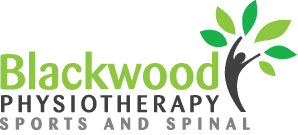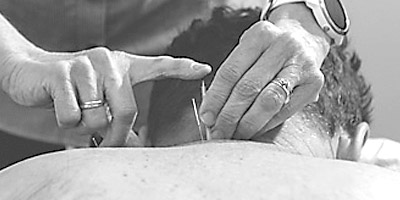With Dry Needling and Western Acupuncture very fine needles are used with this treatment to penetrate through skin and reach deeper structures such as fascia, muscle, ligaments, scar tissue and even bone.
What does dry needling and acupuncture achieve?
With manual needle stimulation, trigger points within muscles can be released resulting in relief of muscular pain. Dry Needling can also be used to stimulate tissue, healing in ‘slow to heal’ conditions by reactivating the body inflammatory and resolution mechanisms. Painful tendons, ligaments, muscles and bone surface can be targeted with needling to activate pain relief via nerve pathways to pain recognition centres within the brain.
Often used in the treatment of
- Posture
- Range of joint motion
- Muscle strength
- Muscle balance
Q&A
- Needles cause minimal discomfort
- Thin, flexible and strong needles are used
- All needles surgically sterile and disposed of after use
Common questions
Why Dry Needling?
Dry Needling releases muscle tension and reduces pain by targeting trigger points with the use of special single-use sterile fine needles, also known as acupuncture needles. Dry Needling is an effective treatment and you will often experience immediate pain relief as your muscles relax and it is often less painful than deep tissue massage.
How does it work?
A very small needle is used to penetrate the skin targeting painful trigger points. The penetration of the needle will cause a local reaction, improving blood flow and releasing tight bands in the muscle.
What types of conditions benefit from Dry Needling?
Dry Needling may be considered by your physiotherapist in the following conditions:
-Low back pain
-Neck pain
-Headaches
-Pelvic Girdle pain
-Shoulder Dysfunction
-Tennis Elbow
-Knee pain
-Temporomandibular Joint (TMJ) Pain and Dysfunction
-Chronic pain
-Arthritis
-Sports injuries
-Muscle tears/ Strains/ Tightness
Is Dry Needling safe?
Yes, it is very safe. All Physiotherapists performing Dry Needling have post-graduate training and will only suggest Dry Needling if they feel you may benefit from it. There are certain factors that may make Dry Needling an unsuitable treatment for you, your physiotherapist will be able to discuss this with you. The needles are surgically sterile, single-use and disposed of correctly.
Does Dry Needling hurt?
You are unlikely to feel the dry needle when inserted. When the needle penetrates the trigger point you may feel a twitch response of the muscle, an ache which quickly settles or nothing at all. Most people will find Dry Needling to be less painful, yet more effective than a deep tissue massage.
Do I need a seperate appointment for Dry Needling?
A seperate appointment is not needed as it is incorporated into your physiotherapy session if deemed appropriate by your physio. Dry Needling is usually performed in conjunction with other treatments such as joint mobilisation, stretching, soft tissue releases and exercise. Dry Needling will only be used as a treatment method with your consent.
How many sessions do I need for Dry Needling?
Your physiotherapist will be able to discuss your specific situation with you, but most people will require more than one session to get the maximum benefit.
Is Dry Needling the same as Acupuncture?
Acupuncture and Dry Needling techniques are similar but their use in treatment and rationale are different.
Dry Needling and ‘Western Acupuncture’ are performed by physiotherapists with post graduate training. It incorporates needling within the western framework of anatomy and neurophysiological principles. Whereas, Acupuncture generally relates to the traditional Chinese medicine based on stimulating the flow of Chi (energy) through the meridians of the body.

